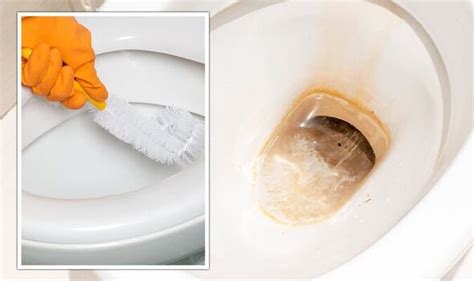Toilet Cleaning Made Easy: Limescale Removal
Dealing with limescale buildup in your toilet is a common household frustration. That unsightly, hard, chalky deposit not only looks unpleasant but can also indicate harder water and potential plumbing issues down the line. This comprehensive guide will walk you through effective and easy methods to remove limescale from your toilet, leaving it sparkling clean. We'll cover various techniques, from readily available household items to specialized cleaning products, answering frequently asked questions along the way.
What Causes Limescale in Toilets?
Limescale is primarily caused by hard water. Hard water contains high levels of dissolved minerals, mainly calcium and magnesium carbonates. As the water evaporates from your toilet bowl, these minerals are left behind, gradually accumulating into the stubborn deposits we know as limescale. The more mineral-rich your water, the faster the limescale builds up. Regular flushing doesn't remove it; it requires targeted cleaning.
How Often Should I Clean My Toilet for Limescale?
The frequency of cleaning depends on the hardness of your water and how frequently your toilet is used. As a general guideline, aiming for a thorough limescale cleaning every 2-4 weeks is a good starting point. However, if you notice significant limescale buildup more frequently, you might need to increase the cleaning schedule. Regular, lighter cleans between these deep cleans will help prevent major build-up.
What are the Best Home Remedies for Limescale Removal?
Many effective limescale removers can be found right in your kitchen! These natural methods are often gentler on the environment and your plumbing than harsh chemicals.
White Vinegar:
White vinegar is a highly effective and readily available natural cleaning agent. Its acidity dissolves limescale quite effectively.
- Pour 2 cups of undiluted white vinegar into the toilet bowl.
- Let it sit for at least an hour, preferably overnight, to allow the vinegar to work its magic.
- Scrub the bowl with a toilet brush, paying special attention to the areas with heavy limescale buildup.
- Flush the toilet.
Baking Soda and Vinegar:
This combination creates a fizzing action that helps loosen and remove limescale.
- Sprinkle 1 cup of baking soda into the toilet bowl.
- Pour 2 cups of white vinegar over the baking soda. You'll see fizzing – this is a good sign!
- Let the mixture sit for 30 minutes to an hour.
- Scrub with a toilet brush and flush.
What are Some Commercial Limescale Removers?
While home remedies are effective, commercial limescale removers often provide stronger cleaning power, particularly for stubborn or extensive limescale. Always follow the manufacturer's instructions carefully when using these products. Ensure proper ventilation and wear protective gloves.
How Do I Prevent Future Limescale Buildup?
Prevention is key! Here are some strategies to minimize limescale formation:
- Regular Cleaning: Consistent light cleaning prevents limescale from becoming a major problem.
- Water Softener: Consider installing a water softener if you have extremely hard water. This reduces the mineral content in your water supply.
- Toilet Bowl Cleaner: Regular use of a toilet bowl cleaner designed to prevent limescale can significantly help.
Can I Use Bleach to Remove Limescale?
While bleach is a powerful disinfectant, it's not the most effective solution for limescale removal. It's better to use a dedicated limescale remover or one of the natural methods mentioned above for better results. Bleach can be used in conjunction with other cleaning methods for disinfecting after the limescale is removed.
Is it Safe to Leave Limescale Removers in the Toilet Overnight?
Generally, yes, especially with natural solutions like vinegar. However, always check the manufacturer's instructions for commercial products. Overexposure to harsh chemicals isn't recommended, and prolonged contact could damage certain toilet materials.
My Toilet Still Has Limescale After Cleaning. What Should I Do?
If your toilet still has limescale after trying various cleaning methods, the build-up might be particularly stubborn. You could try repeating the cleaning process, using a stronger commercial cleaner, or consider using a pumice cleaning stone. If the problem persists, you might need to consult a plumber to rule out underlying plumbing issues.
By following these tips and choosing the method best suited to your needs and the severity of the limescale, you can keep your toilet clean, sparkling, and free from unsightly deposits. Remember to always prioritize safety and follow product instructions carefully.

